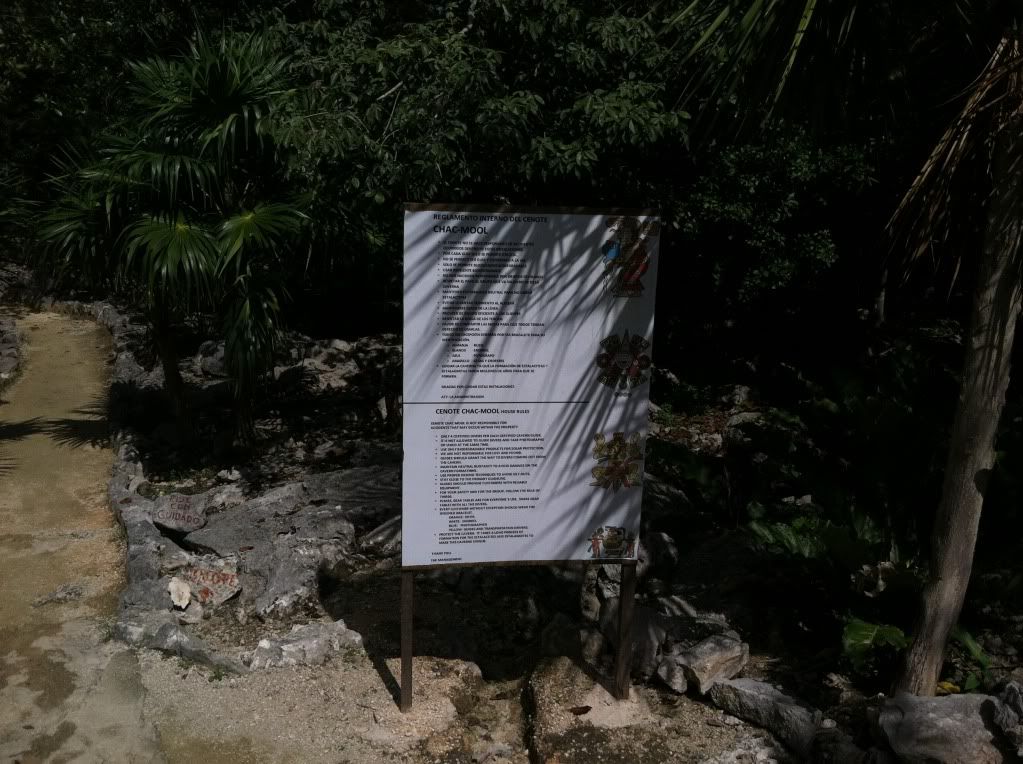what the Brazilians thought is pure speculation, we will never know what they thought and what they were told
the point is no matter who you think you diving with why would you go beyond the skull-and-crossbones sign, its universally known what it means
please correct me if i'm wrong
-you need more than OW certification to go diving where there's an overhead environment
-my understanding is that when you go diving in a cenote you will have a view of the sky, no overhead environment
You have been incorrectly informed, as have a few open water divers that have been on a guided cavern dive.
It is recommended that the minimum certification for a guided cavern dive be advanced open water.
It should be explicit that you are in an overhead environment and may be as far as 200' / 70 m from the surface. This is even on the sign that you photo shows.
now if that is true why where they so far inside the cavern?
other question is why did they accept to go so late in the day?
Why where they that far into the cavern, because they trusted their guide and most likely their guided did not tell them the safety rules that they should follow to insure a successful exit from the cavern.
At the time they entered, there was plenty of light in the cavern zone.
it is very unfortunate that our society has taught us to be ignorant and complacent and blindly trust someone else with our own life because we can turn around and sue them if something goes wrong
the internet has everything imaginable and those that wish to be informed will have no trouble educating themselves
A lot you get out of suing someone when you are dead.
Don't believe everything you read on the internet, I was once called the King of Cavern diving 8)
what i am getting at is that there was a point in that dive when the two Brazilians should have recognized that they are headed to an area that is off limits and had a choice to call the dive of course this is still all speculation and we will never know the truth unfortunately

i strongly believe that everyone should continue to exercise their own judgement no matter how qualified you think the guide is, after all is your own life on the line
please understand that i am in no way trying to be a smart a**, just want to educate myself and express my own opinions in the process
In my experience Divers put too much trust into the dive guide at the open water level or a guided cavern dive or even those that are full cave certified. Some of this is understandable, if we don't know there is a risk how can we prepare for the risk?? There has to be some competency in the professional that you hired and you trust that there is, until something goes wrong.
Here on Scubaboard there are many recommendations for instructors, guides and equipment, I have made some of those recommendations myself. I recommended a regulator after just 3 dives, it was my 2nd set of regulators I purchased and I thought I loved them on that first weekend. However I didn't have much to compare them to when I made the recommendation that they were a great set of regs. After another 6 weekends of diving, I decided that they were the worst set of regs in the world. My point is that without a good baseline to judge those regs, I really didn't make a good recommendation, but I am sure someone else read my review and purchased a set of those regulators based on what I said.
Before we make a recommendation for a guide or an instructor, know what we are basing the recommendation on. He was a great guide, because of what???? The Tacos you had, because they came across as an expert, because they set up your gear, because you had a great dive??? The recommendation is based on your experience with that person. What we need is a check list when we make a recommendation:
Was a dive brief completed and did it contain all the points that a thorough brief should have (or was it about 15 seconds)?
Was the predive safety check preformed?
5 point descent?
ect
ect
ect.




